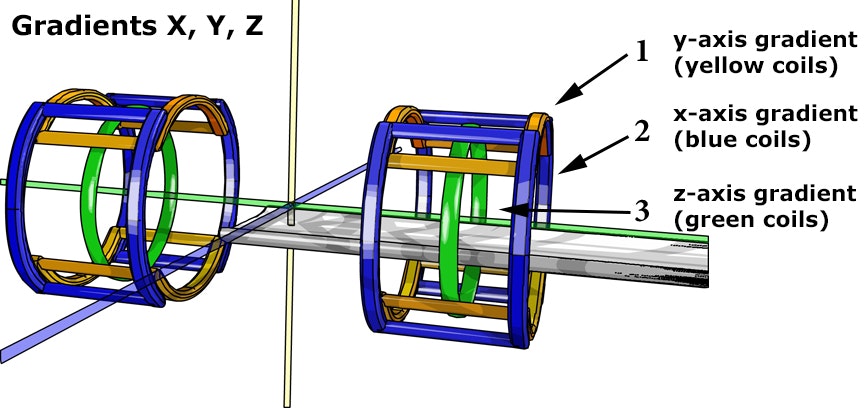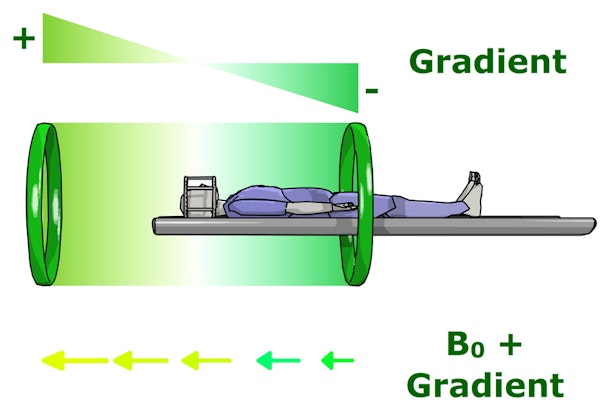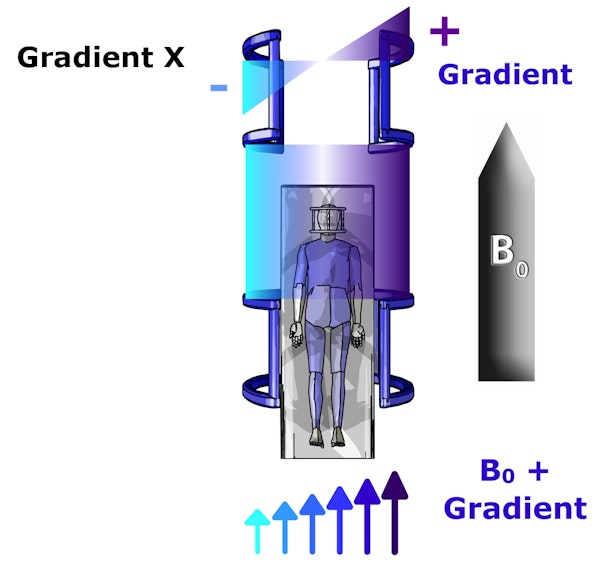Magnetic field gradients
Gradients components
Magnetic field gradients are needed to encode the signal spatially. They produce a linear variation in magnetic field intensity in a direction in space. This variation in magnetic field intensity is added to the main magnetic field, which is far more powerful. The variation is produced by pairs of coils, placed in each spatial direction.

The direction of the magnetic field is not modified. By adding them to B0, a linear variation is produced in the total magnetic field amplitude, in the direction to which they are applied. Their action is considered as homogeneous on a plane perpendicular to the direction of application.
This modifies resonance frequency, in proportion to the intensity of the magnetic field to which they are submitted (in accordance with Larmor’s equation: the stronger the field, the faster they precess). This variation in Larmor frequency also causes a variation and dispersion of spin phases.

Variations in the field produced by gradients in direction y

Variations in the field produced by gradients in direction z

Variations in the field produced by gradients in direction x
Gradient characteristics
Gradient performances are linked to:
- their maximal amplitude (magnetic field variation in mT/m), which determines maximal spatial resolution (slice thickness and field of view)
- their slew rate, corresponding to their switching speed: high slew rates and low rise time are required to switch gradients quickly and allow ultra-fast imaging sequences such as echo planar (EPI)
- their linearity, which must be as perfect as possible within the scanning area.
Eddy currents
The rapid switching of the gradients induces currents in the conducting materials in the vicinity of the gradient coils (cryogenic envelope, electric wires, antennas, homogenization coils, etc.). These induced currents (Eddy current) will oppose the gradient fields and cause a decay in their profile.
There are several methods to reduce the effects of these induced currents:
- Active gradient coil shielding
- Optimizing the electric current profile sent to the gradient coils while ascending and descending to offset the Eddy currents
Moreover, gradient switches produce Lorentz forces causing vibrations in the gradient coils and their supports. These vibrations are the main source of the characteristic MRI noise.
